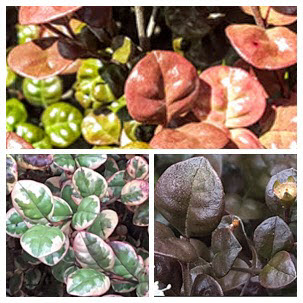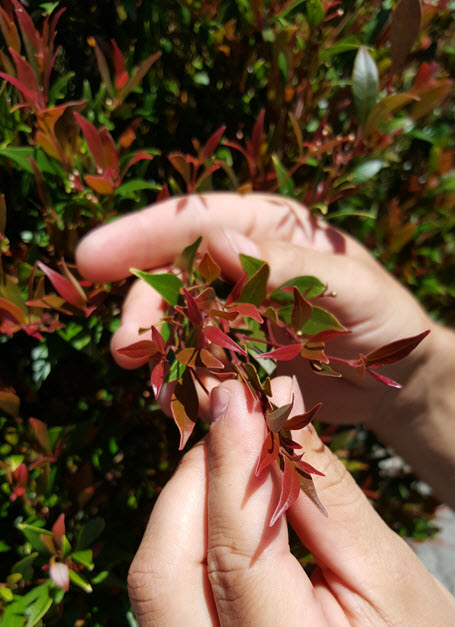Tasmanian news; 5 February 2016: Biosecurity Tasmania
Home gardeners and property owners are reminded to be on the lookout for signs of the fungal disease Myrtle Rust.
Continuing surveillance by DPIPWE has detected seven recent cases in private gardens in North-West Tasmania. Those diseased plants have been removed and destroyed. More detail at: http://dpipwe.tas.gov.au/biosecurity/current-biosecurity-threats
Tell-tales signs of the disease include bright yellow powdery patches on soft growing tips, leaves and stems of Myrtaceae species such as Lophomyrtus cultivars ‘Black Stallion’, ‘Red Dragon’ and willow myrtles, Agonis flexuosa, Chilean guava and native tea trees, paperbarks and bottle brushes.
Lophomyrtus plants are the key carriers of Myrtle rust and Biosecurity Tasmania needs to inspect these plants in home gardens (with your permission) for signs of disease.
You can help by simply letting us know if you have Lophomyrtus plants on your property. The most common Lophomyrtus varieties found in Tasmanian gardens are: ‘Black Stallion’ (varying from burgundy to green/brown leaves); ‘Red Dragon’ (reddish leaves); or ‘Rainbows End’ (pink and cream variegated leaves). Myrtle Rust Hotline
(03) 6165 3785
Tasmanian news; December 2015
The Tasmanian myrtle rust response program that commenced in February 2015 continues with its efforts to eradicate the fungal disease from the state.
Response team members have recently carried out a series of re-surveillance inspections on previously infected properties throughout the state, with a particular focus in and around the Burnie area, where the extent of the disease was greatest at the beginning of this current response operation. No new infections have been detected to date.
There have also been no reports of myrtle rust being identified in our native bush land environment.
The myrtle rust response program will carry on into the summer season where strategically targeted surveys will be conducted throughout the state; with specialist staff from the RTBG again making a major contribution to the program by undertaking surveys around the south of the state.
While it is encouraging that there have been no new signs of myrtle rust, the response team remains cautious about the chances of eradicating the disease from the state and will closely monitor changes over the remaining summer season where hot and humid conditions may create conditions conducive to the expression of myrtle rust.
The controlled area declarations put in place by Biosecurity Tasmania in March 2015 will continue in force until it formally amends or revokes the notice following confirmation that Lophomyrtus and Chilean plants no longer pose a high risk to the spread of myrtle rust in the state.
Nurseries, plant production facilities and related businesses, together with key stakeholders and the Tasmanian community are encouraged to remain vigilant for the signs of myrtle rust and immediately report any signs to the Myrtle Rust Hotline on 03 6165 3785.
Phil Wood
Communications Coordinator
Biosecurity Tasmania
Department of Primary Industries, Parks, Water and Environment



